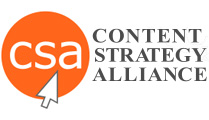Content Components
By Khaled Aly
CSA Member
Content components are modular information units, marked up according to XML rules. XML is a meta language that supports content structuring by enforcing a grammar to each communicated dialect. Documents, service specifications, or messages… Content servers communicating to human users, or cross-communicating provisioning (web) servers… The content lingo is not free form but rather well defined so that machines cannot miss any semantics and publishers can maximize utility by reusing it within a typed context. That is, each piece of information, regardless of its length and hierarchic composition, has a named (transformable) type and ID to associate with.
Content components mainly refer to text documents that may contain media resources by reference. So, resources are there to visually and/or audibly enhance content deliverables, which when well assembled produce an information product of focus value to a business group/objective. As standard types and transformation technology broadens, components become unrestricted to source information. Rather, they may be recyclable targets that can be transformed differently by other engines to serve other purposes, keeping in mind conditional source transform processing that is becoming abundantly possible as platform suppliers have embraced its prominence.
Omni-channel publishing involves temporal, end-user device-dependent, selection and arrangement of content components, to deliver the right information, in a suitable form to the requester, at the right time.

